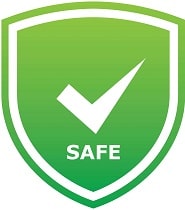Is EINECS 222-534-5 Safe in Breastfeeding
Question
I am a breastfeeding mother and i want to know if it is safe to use EINECS 222-534-5? Is EINECS 222-534-5 safe for nursing mother and child? Does EINECS 222-534-5 extracts into breast milk? Does EINECS 222-534-5 has any long term or short term side effects on infants? Can EINECS 222-534-5 influence milk supply or can EINECS 222-534-5 decrease milk supply in lactating mothers?
EINECS 222-534-5 lactation summary

- DrLact safety Score for EINECS 222-534-5 is 1 out of 8 which is considered Safe as per our analyses.
- A safety Score of 1 indicates that usage of EINECS 222-534-5 is mostly safe during lactation for breastfed baby.
- Our study of different scientific research also indicates that EINECS 222-534-5 does not cause any serious side effects in breastfeeding mothers.
- Most of scientific studies and research papers declaring usage of EINECS 222-534-5 safe in breastfeeding are based on normal dosage and may not hold true for higher dosage.
- Score calculated using the DrLact safety Version 1.2 model, this score ranges from 0 to 8 and measures overall safety of drug in lactation. Scores are primarily calculated using publicly available case studies, research papers, other scientific journals and publically available data.
Answer by Dr. Ru: About EINECS 222-534-5 usage in lactation
X-ray contrast medium with 50-67% of Iodine that is used in Cholecystogram and Cholangiography. At latest update no published data were found on excretion into breast milk. The various Iodinated contrast media for imaging examinations (X-rays, CT scans) are considered compatible with breastfeeding since they are rapidly eliminated with little or no release of iodine, not metabolized and virtually not absorbed when taken by mouth. They are structurally very similar to each other and one of them is their data no or minimal excretion in milk. Given the low lipid solubility of the iodinated contrast, less than 1% of the dose administered to the mother just passing milk.Due to their low oral bioavailability, intestinal absorption is less than 1% of the dose that he may take the infant.The maximum dose just getting the baby is less than 0.01% of the maternal dose, which represents less than 1% of the dose administered to a nursing practice that is a radiological contrast examination. Most radiology scientific societies agree that after a radiological iodinated contrast examination is not necessary to wait any time to resume nursing.
Alternate Drugs for X-Ray Contrast Media, Iodinated. ATC V08A
Diatrizoate(Safe)
Iodixanol(Safe)
Iohexol(Safe)
Iopamidol(Safe)
Iothalamate(Safe)
Ioversol(Safe)
Iopromide(Safe)
Ioxilan(Safe)
Amidotrizoate(Safe)
Iobitridol(Safe)
Iodipamide Meglumine(Safe)
Iopanoic Acid(Safe)
Iopentol(Safe)
Iothalamate Meglumine(Safe)
Ioxaglate Meglumine(Safe)
Metrizamide(Safe)
Meglumine Metrizoate(Safe)
Propyliodone(Safe)
Meglumine Ioxitalamate(Safe)
Sodium Iopodate(Safe)
Amidotrizoic Acid(Safe)
